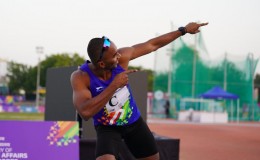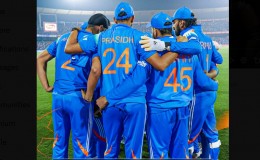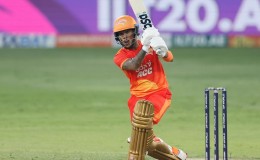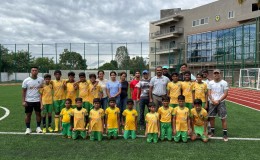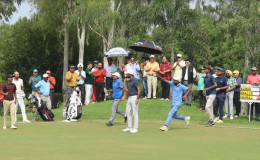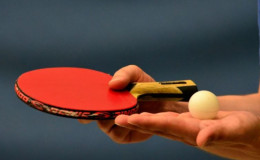Few events evoke the kind of passion that the K-1000 does. The longest running rally in the country and the 3rd oldest rally in the world. Now in its fortieth year, the K-1000's illustrious history is decorated with many highlights- the foremost being it's heritage. Competitors from across the motorsport fraternity eagerly await its arrival on the INRC calendar and love taking part in it, whether it was in the old days with limited choice in equipment or in modern times now.
November 21-23 will mark the historic 40th edition of the K-1000 bringing back a sense of nostalgia and a plethora of memories to the thousands who have braved its courses and challenges, participants-riders and drivers from the past who have now become administrators. Youngsters, who have grown up around the rally, whether they were lucky enough to experience one first hand or whether they were from their heroes, who fondly relived their anecdotes. To take part in the K-1000 is a career defining highlight, it marks the induction of a driver, rider and navigator into an exclusive club of a privileged few who will forever be marked down in the pages of Indian Motorsport history.
But what makes the K-1000 so special? Mostly, it is the shear competitiveness of the event, the stages are carefully designed and curated to serve as a real test to any rally car driver worth his salt. The best drivers from across the country enrol themselves across a variety of classes, making this an incredibly competitive event. In the old days and the great-to-drive stages today that make up the charm of the K-1000. The KMSC used to conduct other events like drag meets, hill climbs, and autocross etc but the K-1000 was their flagship and the aspirational event every driver wanted to win!
The K-1000 was in its infancy designed to be spread out over 1000 miles, hence the name. It was originally run in the TSD format, (Time-Speed-Distance) this was a true test of man and machine and how well they could work in tandem. As drivers were given a stipulated time within which they had to reach a certain distance, often at the cost of their vehicles.
Today, however, rallying consists special stages that are short but very fast. But back in the day, stages would be several hundred kilometres long spread across many towns and cities in Karnataka and sometimes even touching Goa. To accommodate appropriate rest breaks for the cars and drivers there used to be scheduled breaks of one hour, at dinner and one hour early the next morning, during these breaks the cars had to be placed in parc ferme whilst drivers recuperated. The first winners of the K-1000 were Bangalore's DR Shivram and Vinod Sivappa in an Ambassador car. The first two-wheeler winners were Coimbatore's Rajamanikyam and Dr Vetrivelu
Obviously, driving for 1600Km was an incredibly tough proposition, a real test of man and machine, naturally a K-1000 finisher was considered a good rider/ driver. Apart from the sheer distance the competitors had to cover, there were several other challenges a team faced, there was no means of communicating back to the authorities in case there was a breakdown or accident. The competitors that followed next on the stage had to report a breakdown or accident at the next Time Control. That apart, the Fiat and Ambassador cars were already outdated. So, it was imperative to strip the vehicles, rebuild them and get them ready for a gruelling Rally. For navigation, an Odometer had to be fabricated. The navigator had to calculate the error manually and without calculators.
The cars used in the old days were Fiat, Ambassador, Herald and Ford. Subsequently, upgraded versions of the Fiat and Ambassador and also the more modern Premier Padmini cars were used for racing and rallying. Though those cars did not have the security of advanced safety features like today's card do, seatbelts and helmets were pretty standard. In the two-wheeler category, Royal Enfield Bullet, Rajdoot, Java and Yezdi motorcycles were used and BSA, Triumph and AJS much before.
The top competitors then, apart from Sivappa and Shivram, were Ravi Gupta, Devendra Gupta, Ramnath Gupta, Dayanand Mandre, Uday Eswaran, Bobby Jayaram, AD Jayaram, KS Ramaswamy (popularly known as Papu Ramaswamy), Shramik Masturlal, TV Ramachandra, Murali G Ema, Chakrapani, SA Sridhar, Gautam Kadam, CK Chinnappa, Satyavrath, Jagat Nanjappa, Anita Nanjappa, Farooq Ahmed etc. over the years. Of course, there were many more greats from Karnataka who had dominated the Karnataka and Indian rallying scene.
Flash forward to today, the K-1000 is a fast stage rally event. The first stage rally K-1000 events were held at the India Mines, the event has also been staged in Bagepalli, Maddur and Sidlaghatta. Each venue has its own surface characteristics and that has kept the challenge alive in the K-1000.
How the India Mines began to be used as a K-1000 venue is an interesting story in itself. KMSC chairman Bharat Raj, committee member Bhaskar Gupta and former rallyist Murali G Ema had started the India Mines in 1992. Gupta stayed at the mines site for about two years and when he stayed there, he would chalk out routes for a rally. He did this for about two hours every day and for six months and had made up about 40Km of stages. However, he did not disclose this to anyone. Gupta and Satyavrath had been setting routes from 1991 and could easily have set more than 200 routes. In 1995, committee member KV Sripathi and Gupta had set out to finalise the route and there was unrest and lawlessness on the way. This unrest forced the KMSC to think of other alternatives. That is when Gupta revealed that he had made route plans. It was accepted in the KMSC committee and the first K-1000 stage rally was held at the India Mines in 1996.
In modern times, Vikram Mathias, Lohitt V Urs, Girijashankar Joshy, Sanjay Agarwal, BS Sujith Kumar, Arjun Rao Aroor and others are the stars who have emerged from events like the K-1000 and gone on to win much more at other venues in the country. The machines these rallyists drive are pretty sophisticated pieces of machinery. The fast stages of the K-1000 features jaw dropping action provided in full with the Maruti Suzuki Esteem, Baleno and Gypsy, Mitsubishi Cedia, Volkswagen Polo making their way through these intricate and challenging stages.



